“The Uni-Vibe was an excellent alternative to a Leslie and became a mainstay for Jimi Hendrix”: Everything you need to know about modulation, from Leslie emulators and chorus pedals to bucket-brigade chips and phasers
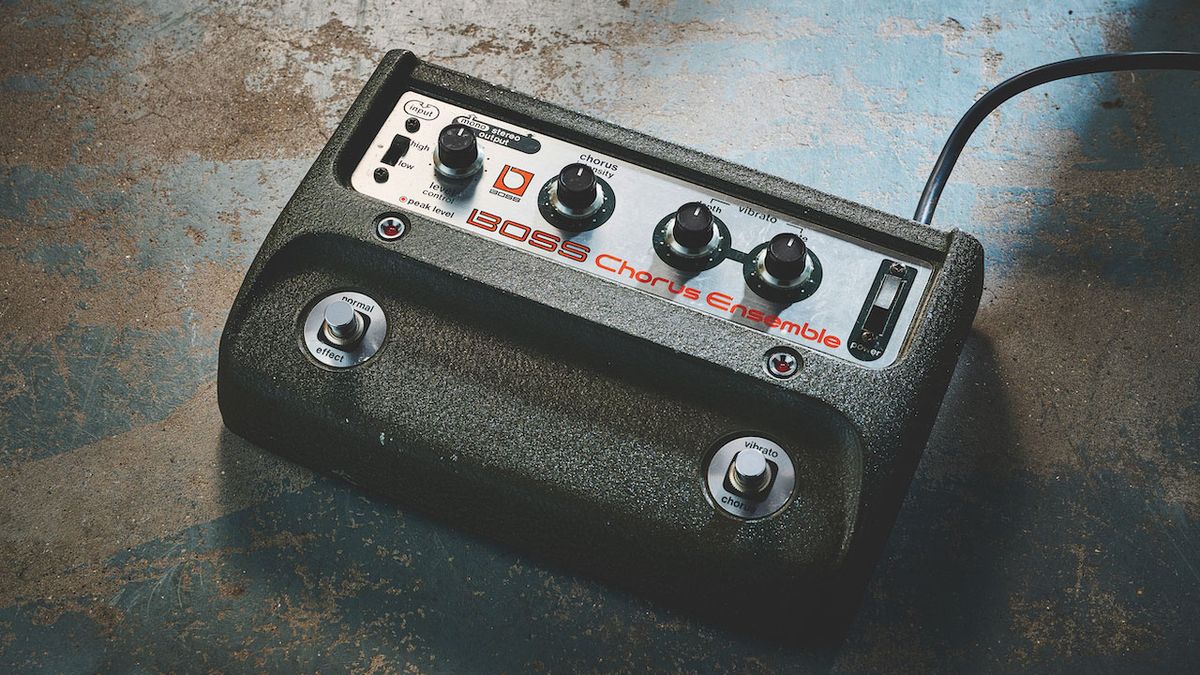
In our recent feature on tremolo, we described how a valve can be configured to create a low-frequency oscillator (LFO) that can modulate amplitude.
You can’t actually hear the oscillator itself, merely the effect it has, and that effect isn’t restricted to tremolo. In addition to amplitude, an LFO can be used to modulate pitch, frequency response, phase and delay – and that leads us onto vibrato, chorus, flangers and phasers.
Doppler Vibes
Many of us will have experienced the acoustic phenomenon of the pitch of a police car siren appearing to increase in pitch as it approaches and decrease as it moves away. It’s called the Doppler effect, and if the volume and pitch remain constant you’re probably in trouble.
Engineers have developed clever ways to replicate natural acoustic phenomena such as reverb and echo, so it’s hardly surprising that they did the same for the Doppler effect. During the late 1930s a radio repair engineer called David Leslie bought a Hammond organ, but he found himself disappointed with the sound.
He designed a speaker cabinet that utilised spinning horn speakers for the upper frequencies and a rotating baffle for a fixed low-frequency driver. Hammond wasn’t interested in the speaker cabinet, so David Leslie started his own company and his rotating speakers quickly became synonymous with Hammond organs.
The onboard valve amplifiers of Leslie cabinets would overdrive very nicely, so it was probably inevitable that guitarists eventually discovered them. More closely resembling a phone box than a stompbox, the Leslie nevertheless provided guitarists with the first opportunity to experience the intoxicating mélange of pitch modulation, tremolo and phasing that they create.
You can hear this on Badge by Cream, Hendrix’s Little Wing solo and several of David Gilmour’s guitar tracks on Pink Floyd’s Wish You Were Here.
Get The Pick Newsletter
All the latest guitar news, interviews, lessons, reviews, deals and more, direct to your inbox!
The main drawback of Leslie cabinets, however, is that they’re so heavy you need road crew to move them. Various companies subsequently developed their own rotating speaker cabinets with more guitar-friendly dimensions and easier portability. The Vaughan brothers both used the Fender Vibratone and David Gilmour favoured the Yamaha RA-200.
The advent of solid-state electronics was ushering in the era of the effects pedal, and the Shin-ei Uni-Vibe proved to be an excellent alternative to a Leslie
Even so, the advent of solid-state electronics was ushering in the era of the effects pedal, and the Shin-ei Uni-Vibe proved to be an excellent alternative to a Leslie. It soon became a mainstay for Jimi Hendrix and is most closely associated with Robin Trower. Featuring a chorus/vibrato switch on the front, it provided a four-stage phasing with photo resistors and could be operated with a foot controller.
Modern stompbox Leslie simulators are plentiful, so check out the DLS RotoSPIN, Strymon Lex, Boss RT-20 and Hammond Leslie G. The now-discontinued valve-driven Hughes & Kettner Rotosphere was always highly regarded, and pre-loved examples are easy to find. Also, many DAWs provide rotary speaker plugins.
Vibrato
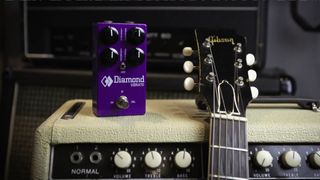
The Doppler effect occurs because the time interval between each wave peak gets shorter as the sound approaches, and longer as it moves away. Clearly, Leslies work by replicating the physical conditions mechanically because the rotating speakers direct the sound towards the listener and away. Time delay and therefore phase shifting contribute to the Doppler effect.
As discussed in our tremolo feature, most amp tremolos use a phase shift oscillator circuit with a three-stage capacitor/resistor (CR) network. The time taken for each capacitor to charge and discharge causes a tiny delay, and by manipulating the delay time engineers can control phase shift. This means that Doppler-style effects can also be created electronically.
One approach is to create two copies of the guitar signal with a 90-degree phase shift between them. These signals are mixed together and the summing amplifier is modulated to move from one side to the other. As it moves, the summed output is effectively modulating the delay and it creates a pitch-shifting effect. It’s more of a pitch wobble than the whooshing phasey sound of a Leslie, but it has a sonic character of its own.

As early as the 1940s, an engineer called John Hannert developed a vibrato for Hammond, and Wurlitzer’s Model 44 Organ had a vibrato effect in 1953. The schematic for Wurlitzer’s vibrato was published by Richard H Dorf in the April 1954 edition of Radio and Television News, and is thought to have ‘inspired’ the vibrato design Dick Denny would later use in the Vox AC30.
Dorf wrote: “A phase change can be detected as a frequency change as long as the phase is continuing to change.” This is crucial because it states that, although we perceive a change in pitch, the actual pitch doesn’t change. In that regard, electronic vibrato effects and the acoustic Doppler effect are the same.
By 1956 Gibson had a standalone vibrato effect unit called the GA-V 1, but the most famous amp vibrato first featured on Magnatone’s 200 Series amps in 1957. The circuit employed silicon carbide voltage-dependent resistors (varistors) to alter pitch.
Varistor resistance would vary depending on the voltage across them, and higher voltage lowered resistance. The effect more closely resembles a pitch-shifting tremolo than a Leslie, and it was famously used by Duane Eddy and Lonnie Mack.
Vibrato circuits are more complex to build than tremolos and require more expensive components so they were a luxury on amplifiers. Maganatone switched from varistors to light-dependent resistors, and transistors had replaced valves by the late 1960s. By then it was possible to build vibrato effects into stompbox enclosures.
The Bigfoot Magnavibe and Malekko Omicron are both designed to produce vintage Magnatone-style vibrato, and the Boss VB-2 compact pedal has a strong following. In addition to Speed and Intensity controls, a modern vibrato pedal may have a Rise Time control to set how quickly the effect kicks in, and expression pedal compatibility.
Chorus
Some chorus effects feature vibrato/chorus switching, and even if they don’t it’s often possible to dial in a vibrato using a chorus pedal because the two effects are so closely related.
Once again, we can trace things back to Hammond organs – and the work of John Hannet. In the 1940s he developed a chorus effect, and Hammond organs were equipped with a switch labelled Tremolo and Chorale. The trick is to combine the dry signal with the vibrato effect.
The Boss CE-1 Chorus Ensemble was the first commercially available chorus pedal when it was released in 1976. Boss began offering it in stompbox form when the onboard chorus effect in the Roland JC-120 amplifier became so popular.
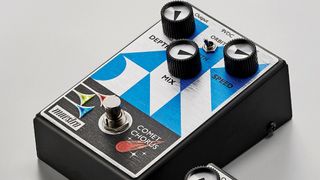
The same technology was also built into a rackmount enclosure called the Roland Dimension D and became a mainstay of the 1980s studio scene. The pedal’s Depth and Rate controls were self-explanatory for anybody familiar with tremolo and vibrato, and the Chorus/Intensity control combined the wet and dry signals. It also had a second footswitch that toggled between chorus and vibrato, and the CE-1 added richness and complexity.
The pedal itself was fairly sizable and required mains power, so it wasn’t long before Boss introduced the CE-2 in the rectangular small-box battery-powered form that has characterised Boss pedals ever since. The vibrato option was dropped, possibly because it appeared too dated, and pretty soon every pedal manufacturer had a chorus in its product line. 1980s guitar music would have sounded very different without them.
Flanging
Flanging can be traced back to a trick performed by studio engineers. Les Paul was doing it in 1952 using acetate disks and later engineers used tape. Famous examples of tape flanging can be heard on The Beatles’ Revolver, Itchycoo Park by the Small Faces and Life In The Fast Lane by the Eagles.
With two reel-to-reel machines playing the same material in sync, one machine is slowed and sped up by applying gentle hand pressure to the supply and take-up spools respectively. The idea is to move the playback forwards and backwards in time by a tiny amount.
Modulating the delay time is key because if the delay time remains fixed, all you get is comb filtering. This can be represented as a series of peaks and troughs on a graph that resemble the teeth of a comb. To achieve the flanger swoosh, the delay time has to modulate so those troughs sweep across the frequency range, and some flangers have delay feedback controls to intensify the effect.
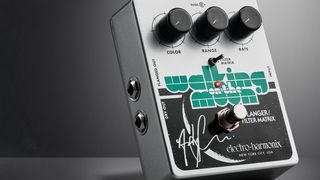
Again, this is a fairly simple effect to create electronically and MXR was the biggest player in the early days of studio flanging. Another early classic was the Electro-Harmonix Electric Mistress, which included a ‘filter matrix’ setting that deactivates the delay modulation.
There’s a fun flanging trick that works particularly well when adding reverb to acoustic guitars and clean electric guitars during mixing, and it’s very easy to do with a DAW using native plugins. Try routing the reverb send through a subtle flanger effect and see what happens. The key is to keep the flanger itself out of the stereo bus.
Phasing
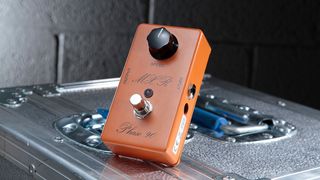
Flanging and phasing are similar in principle, but phasing is simultaneously cruder and more complex. So-called ‘all pass filters’ are used to create notches or troughs in the frequency response by isolating specific frequencies then flipping their polarity before recombining them with the dry signal. In short, this is induced phase cancellation at specific frequencies, rather than delay-induced phase shift.
The more filter stages a phaser has across the frequency range, the greater the intensity and smoothness of the effect. But fixed notch filters alone will only result in rudimentary comb filtering. Like flangers, phasing is characterised by that swooshy sweep, but to achieve that the notch filter frequencies are modulated, rather than delay.
A capacitor and resistor are combined to create the filter, and the centre frequency can be moved by modulating the resistor value. The various ways to do this include applying a low-frequency oscillator signal to light-dependent resistors (Mu-Tron Bi-Phase and Uni-Vibe), J-FETs (MXR Phase 45, 90 and 100), and operational transconductance amplifiers’ (EHX Small Stone).
The Bucket Brigade
A final mention should be made of the microchips known as bucket brigade devices (BBDs) that made all these modulation effects small and cheap enough to build into pedals. Numerous capacitors could be accommodated on a single chip and they could be configured like the capacitor chain of the low-frequency oscillator we discussed in our tremolo feature.
BBDs such as the Phillips TDA1022 could hold several hundred capacitor stages on a single chip. With each stage charging and discharging, the greater number of capacitors created the potential for delay times that could greatly exceed minor phase shifts. Mods for rockers, indeed.
Huw started out in recording studios, working as a sound engineer and producer for David Bowie, Primal Scream, Ian Dury, Fad Gadget, My Bloody Valentine, Cardinal Black and many others. His book, Recording Guitar & Bass, was published in 2002 and a freelance career in journalism soon followed. He has written reviews, interviews, workshop and technical articles for Guitarist, Guitar Magazine, Guitar Player, Acoustic Magazine, Guitar Buyer and Music Tech. He has also contributed to several books, including The Tube Amp Book by Aspen Pittman. Huw builds and maintains guitars and amplifiers for clients, and specializes in vintage restoration. He provides consultancy services for equipment manufacturers and can, occasionally, be lured back into the studio.
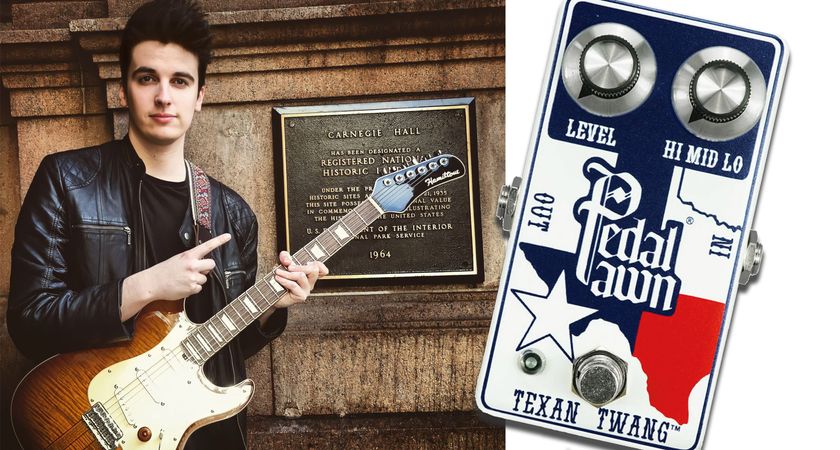
“Everyone who buys our products comes back saying the same thing – it’s the closest they’ve gotten to that SRV sound”: Behind the rise of Pedal Pawn, the UK stompbox brand loved by Eric Gales, Philip Sayce and Stevie Ray Vaughan fanatics the world over
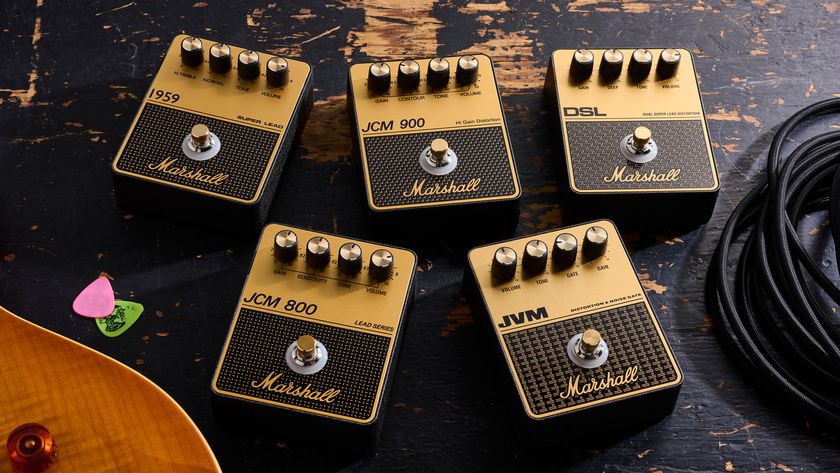
"The legendary amp maker is taking aim at other Marshall-in-a-box pedals with a new lineup that is diverse, well-made, and very well-thought-out": Marshall 1959, JCM800, JCM900, DSL, and JVM overdrive pedal review
Most Popular










![Eagles - Life in the Fast Lane (Live on MTV 1994) (Official Video) [4K] - YouTube](https://img.youtube.com/vi/PhC7Gh84CdY/maxresdefault.jpg)
